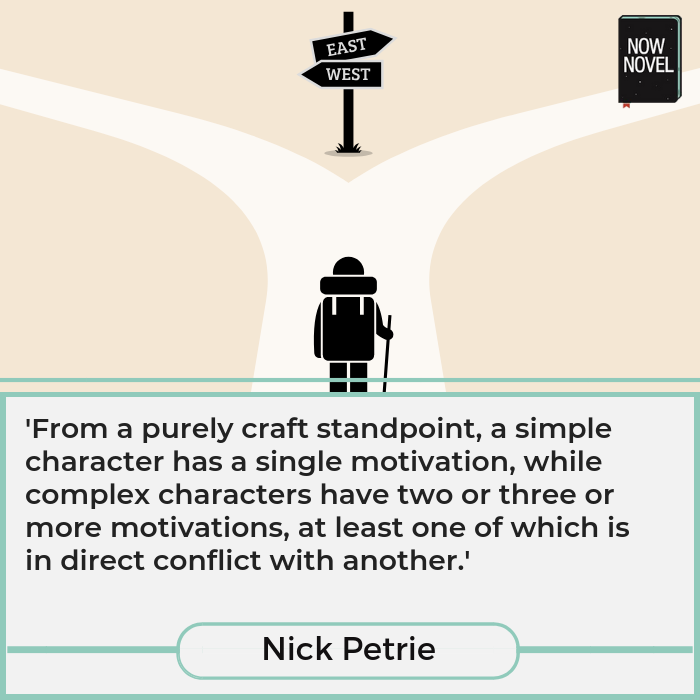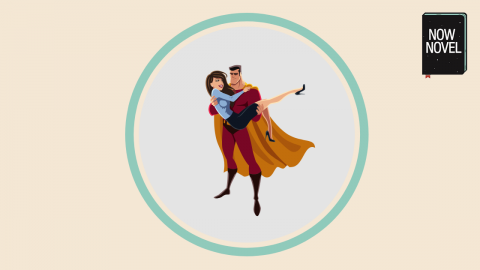Character tropes (common stock characters) have their place in stories. Satires and spoofs, for example, use types such as the ‘cool mom’ or ‘orphan who must save the world’. Yet character tropes quickly dull a story when characters read as too predictable. To avoid tropes:
1. Know your character tropes
Common character tropes include:
- Perfect, very skilled lead female character who everybody can’t help adoring, even characters whose opposite traits would normally lead to conflict (the ‘Mary Sue’ trope)
- Orphan whose parents’ are conveniently (for the story) deceased, allowing great adventures and close scrapes without the hassle of family ties (the ‘Conveniently an Orphan’ trope)
- A wise ‘other’ (e.g. person of other demographic/ethnicity) who is closer to the earth and full of wisdom (the so-called ‘Magical Negro’ trope)
Exploring websites such as TVtropes.org (‘the all-devouring pop culture wiki’) will keep you informed of common tropes that could provoke eye-rolling.
2. Give characters full complexity
It’s easy to see why using the above three character tropes could dull your characters.
A ‘Mary Sue’ character appears so faultless and universally likeable that we lose conflict and its opportunity for small tensions. Internal and external conflict drive and shape character arcs, at least in part.
The second trope character, the ‘convenient orphan’, has no roots. Often in ways that don’t seem credible. Consider how other characters might have stepped in to fulfill guardian-like or child-rearing roles, for example. (An example: Harry’s neglectful aunt and uncle who become his legal guardians in Harry Potter).
The third example, the wise ‘other’ who helps the (often white) hero, may seem virtuous and thus a ‘good character’. Yet these characters often perpetuate society’s received power relations without challenging or questioning them. A perceptive reader might ask whether this type of character is really true to life today (or to history).
Make sure the ‘others’ your protagonist encounters truly reflect their time and place, strengths, flaws, desires and fallible aspects as much as your protagonist does.

3. Show how characters’ relationships change
A common issue with character tropes is characters relate to each other in predictable ways. ‘Jocks’ bully ‘nerds’. ‘Damsel in distress’ wilts at first sight of ‘rugged rescuer’.
Although some genres embrace stock character types, real relationships have:
- Specific qualities and features (ask, what gives this specific relationship chemistry, or makes it teeter constantly towards conflict?)
- Change (for example the initial ‘honeymoon phase’ of seeing everything a lover does through rose-tinted glasses, versus when reality sets in)
Of course, you may want to tell a traditional romance or underdog story. Yet developing how characters feel about each other gives depth. For example, perhaps the bullies gain a little perspective and respect when the ‘nerd’ character’s band plays at school and they are awed by their talent. Change creates character development. An essential part of good character writing.
Brainstorm characters’ roles and connections in our step-by-step story outlining tool. Outline your story’s central idea and first character for free.
4. Ensure motivations make sense
Character goals and motivations that don’t make sense are some signs of character tropes.
Take, for example, the ‘convenient orphan’. They may be motivated to hunt down their parents’ killers. Yet a fearful or trigger-averse character could just as easily run from any situation that they even vaguely associate with their past.
To ensure characters’ motivations don’t just repeat stock ideas about characters who have X traits or Y history, ask:
- Why does my character have this specific goal?
- What past events and resulting beliefs/wants drive it?
- What are the stakes (what would happen if my character did not achieve this goal?

5. Get first readers’ character insights
Many authors choose to use ‘sensitivity readers’ when writing about cultures or societies to which they do not themselves belong. This is sensible for multiple reasons:
- Eagle-eyed beta readers can spot common stereotypes and misconceptions, helping you fix poor character tropes early
- First readers can help with many other issues of characterization, such as stereotypical description or weak introductions
Get early feedback on characterization and other story elements in our supportive critique community.
What is your worst character trope? Share your thoughts in the comments below!


2 replies on “Character tropes: 5 tips to avoid stock types”
Nice!
Thank you, Hidan! Thanks for reading our blog.